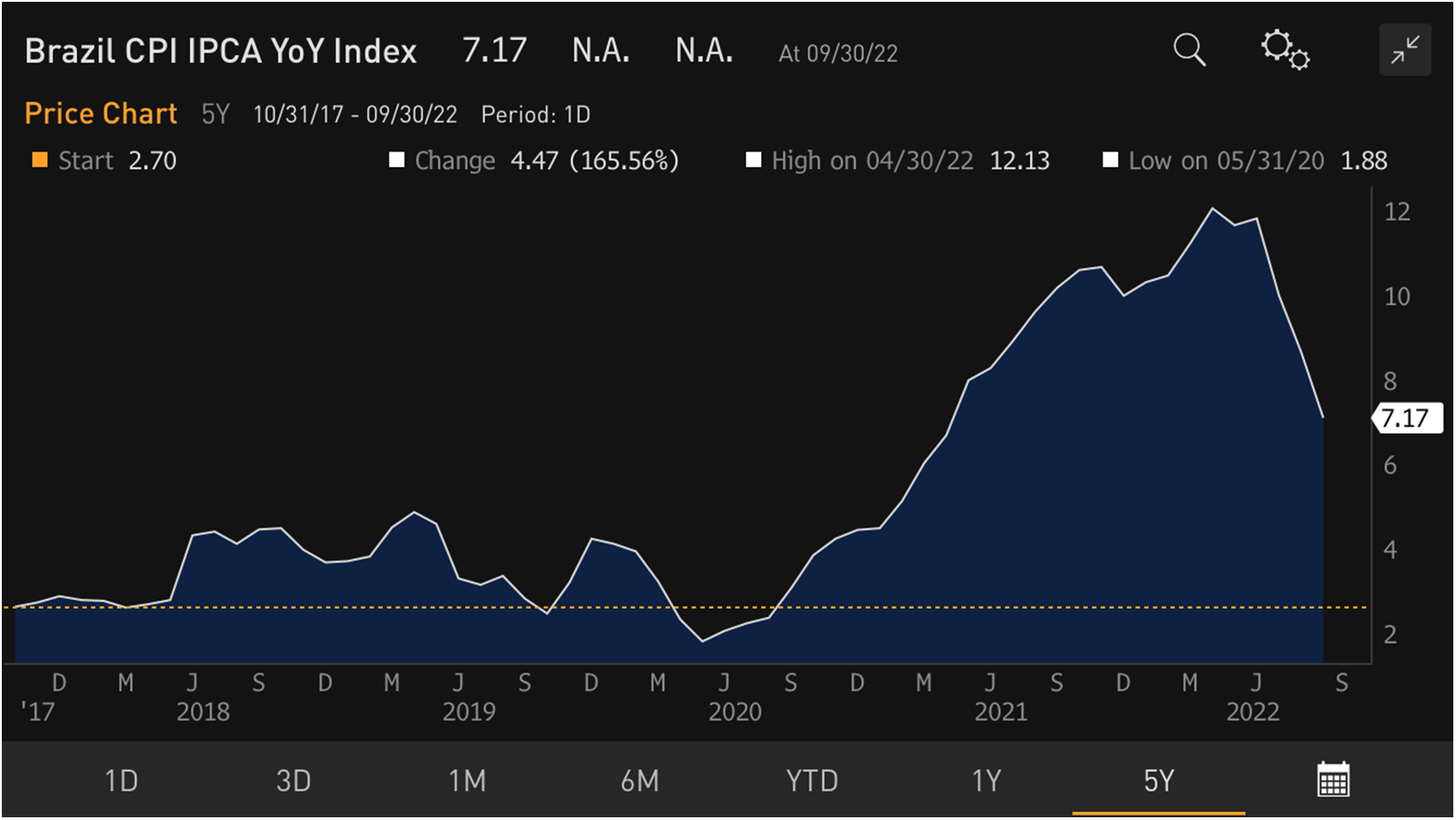Disinflation - One Step Forward, Two Steps Back
11 October 2022
EM Disinflation Progress
Well, to be more precise, it’s one country forward and two countries back. Brazil is on a roll, with headline annual inflation easing to 7.17% (pretty much as expected) in September. Brazil’s disinflation chart looks really great (see below), with early and aggressive rate hikes, fiscal measures, and the currency’s solid performance contributing to the disinflation process. But back in Central Europe, Hungary’s inflation surged to eye-popping 20.1% year-on-year (a meaningful upside surprise), and Czech annual inflation unexpectedly re-accelerated to 18%.
End of EM Tightening Cycles
An interesting twist here is that all three countries that released their September inflation prints today (Brazil, Hungary, and the Czech Republic) signaled the end of their tightening cycles. But as far as we can tell, only the Brazilian central bank is on more or less solid ground - both fundamentally and also having raised its benchmark rate by 1175bps since early 2021. The Hungarian national bank made an impressive catch-up effort in the past weeks - the policy rate is now 13% (almost as high as Brazil’s). The question is whether new instruments would be effective in mopping up liquidity. We also keep an eye on Hungary’s efforts to correct the pre-election fiscal “splurge.” The Czech national bank’s bet is that weaker growth would reduce inflation pressures going forward and that it can rely on currency interventions to offset external price pressures. Would this work before inflation expectations become un-anchored?
Global Price Pressures
Emerging markets (EM) and global inflation trends are at the center of discussions during the International Monetary Fund (IMF) annual meetings in Washington, DC, where we are spending this week. What elements of inflation can the U.S. Federal Reserve and other major central banks actually control? How much more monetary authorities want to do in the current environment - do we need a recession to unwind some (or most?) of price pressures? Is there a risk that major central banks will stop tightening prematurely and will be forced to re-engage later in 2023? Stay tuned!
Chart at a Glance: Brazil Disinflation - Looking Good!

Source: Bloomberg LP
Related Insights
IMPORTANT DEFINITIONS & DISCLOSURES
This material may only be used outside of the United States.
This is not an offer to buy or sell, or a recommendation of any offer to buy or sell any of the securities mentioned herein. Fund holdings will vary. For a complete list of holdings in VanEck Mutual Funds and VanEck ETFs, please visit our website at www.vaneck.com.
The information presented does not involve the rendering of personalized investment, financial, legal, or tax advice. Certain statements contained herein may constitute projections, forecasts and other forward looking statements, which do not reflect actual results. Information provided by third-party sources are believed to be reliable and have not been independently verified for accuracy or completeness and cannot be guaranteed. Any opinions, projections, forecasts, and forward-looking statements presented herein are valid as of the date of this communication and are subject to change without notice. The information herein represents the opinion of the author(s), but not necessarily those of VanEck.
The views contained herein are not to be taken as advice or a recommendation to buy or sell any investment in any jurisdiction, nor is it a commitment from Van Eck Associates Corporation or its subsidiaries to participate in any transactions in any companies mentioned herein. This content is published in the United States. Investors are subject to securities and tax regulations within their applicable jurisdictions that are not addressed herein.
All investing is subject to risk, including the possible loss of the money you invest. As with any investment strategy, there is no guarantee that investment objectives will be met and investors may lose money. Diversification does not ensure a profit or protect against a loss in a declining market. Past performance is no guarantee of future results.
